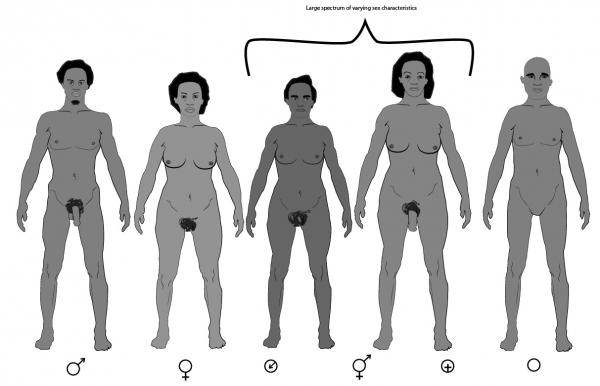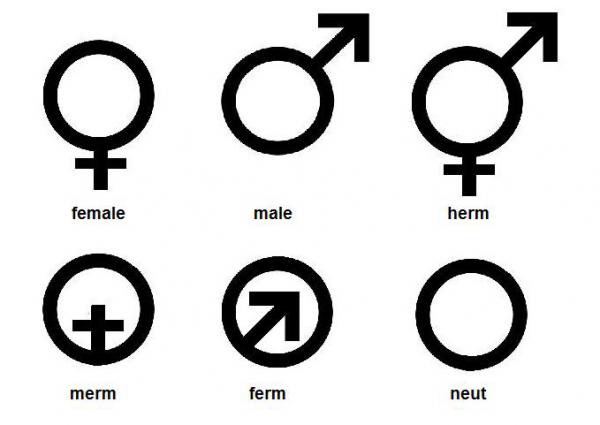BY LETTER
Merm
Science > Biology
Culture and Society > Cultures and Sub-Cultures
Culture and Society > Family and Community
Culture and Society > Cultures and Sub-Cultures
Culture and Society > Family and Community
 Image from Arik |
Male Pseudohermophroditism |
 Image from Steve Bowers |
In the current era the merm sex occurs most frequently as a fashion or lifestyle choice, or as a clade or peer mark. A combination of bionano, nanomedibots, and specific hormone treatments are used to alter the apperance and sex of the individual concerned. Nonsexual merms may feel "gender neutral" and often prefer the company of other merms, while sexual merms have a range of sexual behaviours open to them.
The following table can be used as a rule of thumb for identification of sex, primarily for hominid, or at least mammalian, clades.
| Can naturally bear children? (ie, has female primary sexual characteristics) | Can naturally contribute genetic material to others' borne offspring? (ie, has male primary sexual characteristics) | Has female secondary sex characteristics? (e.g., in humans, enlarged breasts and lack of facial hair. Non-hominid clades often use a different variety of features to make this differentiation: manes, tusks, antlers, colours, etc.) | |
| herm | yes | yes | yes |
| herm | yes | yes | no |
| female | yes | no | yes |
| ferm | yes | no | no |
| merm | no | yes | yes |
| male | no | yes | no |
| neut | no | no | yes |
| neut | no | no | no |
 Image from Anders Finer (copyright; used with permission) | |
| A merm with the secondary sexual characteristics of a female, despite male sexual organs. | |
Related Articles
Appears in Topics
Development Notes
Text by M. Alan Kazlev, Daniel Eliot Boese
updated by Todd Drashner 5-29-18
Initially published on 08 December 2001.
updated by Todd Drashner 5-29-18
Initially published on 08 December 2001.






